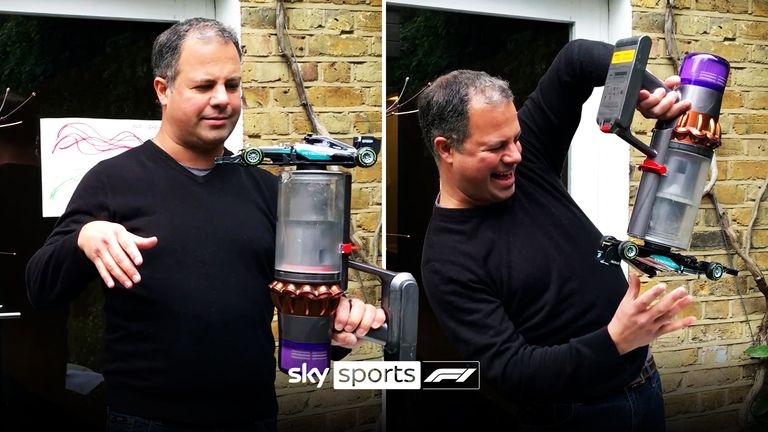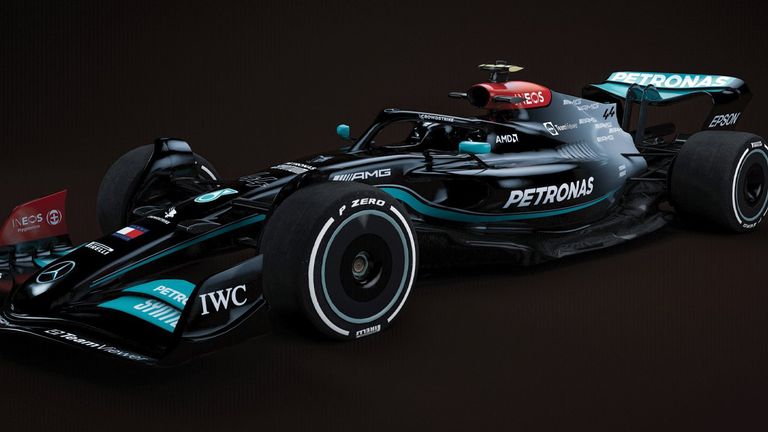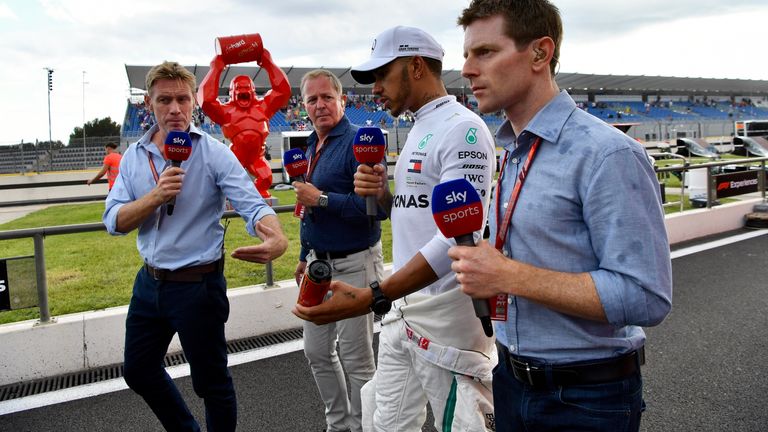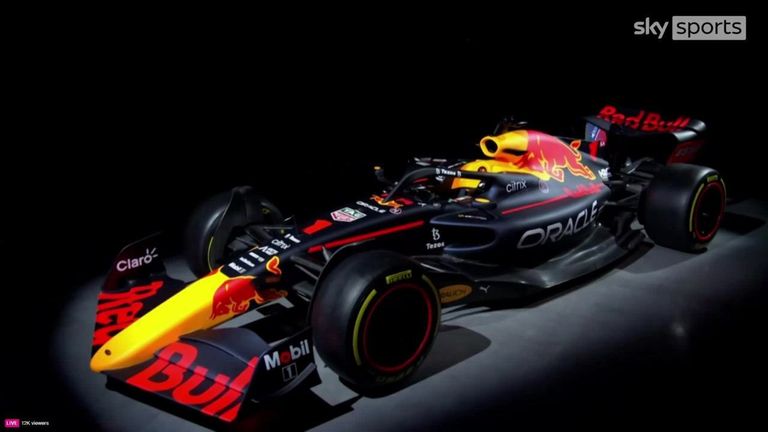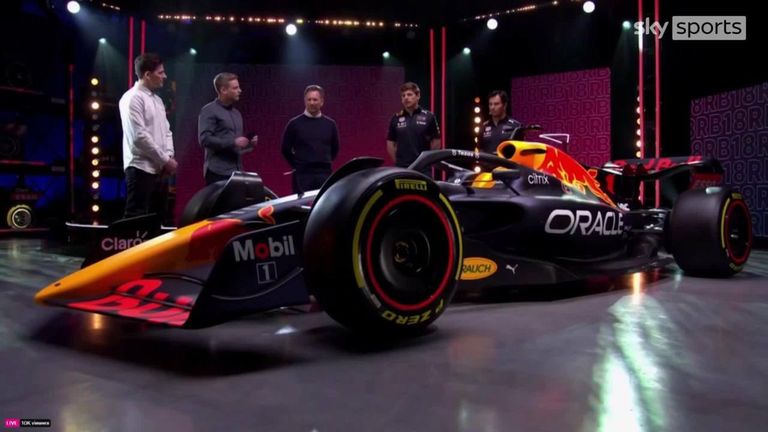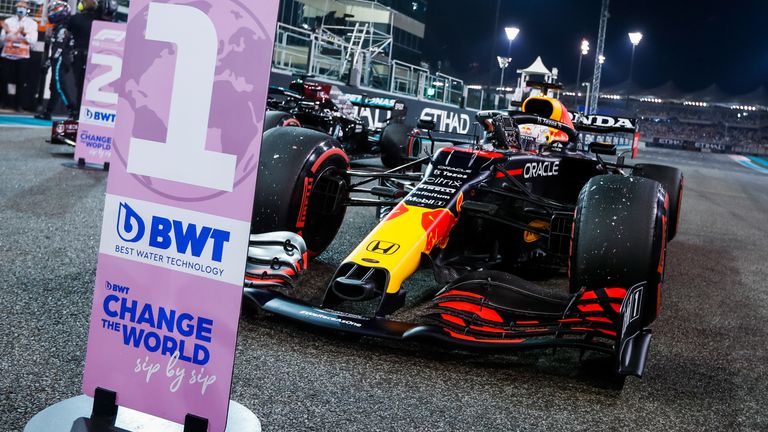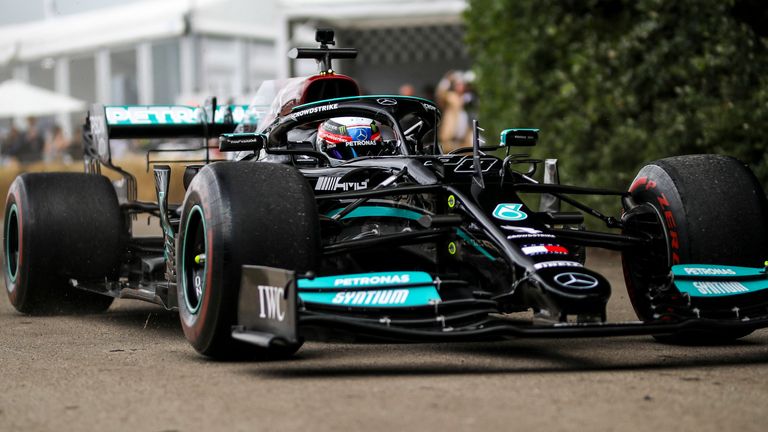The inside track on F1's dramatic new cars: Anthony Davidson talks 2022 changes, Mercedes and more
What are the 2022 cars going to be like on track? Anthony Davidson, the Sky Sports F1 pundit and Mercedes simulator driver, explains the big changes to the 2022 cars, the upcoming challenges and what he expects from the racing as launch season begins
Thursday 10 February 2022 13:33, UK
As a Mercedes simulator driver, Sky Sports F1's Anthony Davidson is in the unique position of being one of the only people on the planet to have a taste of the revolutionary 2022 cars that are set to shake up the sport.
Speaking exclusively to Sky Sports ahead of the next launches and pre-season testing, he provides insight on the big changes and how drivers will have to adapt, while also having his say on the new racing, a potential pecking order reset, and much more...
Intro to the sim and F1's all-new cars
Races and points are won on the track - but it is behind the scenes in the simulator where the real magic often happens. It is there F1 teams can test their cars at any point over the season and there they can test any parts they feel may make their car faster. And, with a sweeping regulation change meaning these new cars haven't been driven on track at all yet, the sim is currently more crucial than ever as the only real reference point.
- Red Bull reveal new car and name for Verstappen's next title bid
- Norris signs new long-term deal as McLaren ward off F1 rivals
- Aston Martin launching car today: All the reveal dates for 2022
Mercedes, like all the other teams, have been working hard on these dramatic new cars ever since the regulations were revealed three years ago, and last season were able to run a mule car in Budapest and Abu Dhabi on the new bigger tyres to give them more data, and giving them a hint of where the cars should be on paper.
"It gives you an understanding of where the performance will be and where things will be different," explains Davidson, who has been a reserve or simulator driver since Mercedes' return to the sport in 2009.
It also puts Ant in the unique position of being one of the only people on the planet to have got a taste of the cars that present one of the biggest changes in F1 history.
"I've had to pull on all my experience as a driver because it does feel different to drive," he explains.
"Although you've got many parts on the car that look familiar, from inside the cockpit it's what you feel through the steering and the behaviour of the car, it can be quite different through different corners and different scenarios."
"It makes you remember lots of different things you've driven in the past, how you can bring all of that together and move things forward," adds Anthony, who on top of his 24 F1 race races, has 13 Le Mans entries and a FIA World Endurance Championship title.
"I've really enjoyed being involved with the development of the car in the sim so far and I cannot wait to see how it translates on circuit.
"Of course, I fully trust people within that team to make it feel as realistic in the sim as it probably will do on track. I'm still fascinated to hear comments from the drivers and see how we're going to have to change the sim to correlate to real life."
What are the main differences driving them?
The F1 2022 cars have been transformed from tip to toe compared to their predecessors as the sport looks for closer racing. That means they look a lot different while, as Davidson explains, drivers - who have also spent plenty of time on simulators this winter - will have to adapt.
"One of the main differences is the inertia of the car," says Davidson. "You've got heavier and bigger wheels and tyres.
"I know Lando Norris has said that they feel different to drive because every time you go putting more weight at each corner of the car, there's more inertia."
What's 'inertia', I hear you ask.
"Imagine holding a compact 5kg weight close to your chest and then rotating your body, and then swapping that to a different 5kg weight, this time in the form of a long bar.
"Although it's the same weight, suddenly the weight is further out there and therefore you feel that inertia as you move your body around.
"And that's what the car is doing out on track now."
And what does that mean for the drivers, exactly?
"It will definitely feel slower in its responses as the weight is further outward on the car.
"You can't get away from that, and it applies to every team. They will all suffer from not just the weight of the car going up, but the weight being further out as well. Suddenly the agility of the car is slightly reduced."
Davidson adds: "You are also visually more impaired from inside the car. Drivers will notice the difference in visibility.
What will be the differences for the 2022 racing?
"The whole thing does feel different but you still definitely know straight away you're in an F1 car," says Ant.
"For fans, they still sound the same and they're still going to look the same going into the corners.
"But I think from the outside they will notice that aesthetically they look different and fingers crossed they'll get to see some closer racing and cars are able to at least follow each other a bit closer."
And that is the crux of these rules. Will these cars - which have been designed specifically to help cars follow each other easier and thus overtake - improve on their predecessors?
"I'm hoping for something more in line with F2, I'm praying for at least that amount of raceability from these cars.
"But for me, the jury is out on whether it will materialise in terms how close they're able to follow.
"As teams are able to chip away at the performance of these cars and find ways to regain an awful lot of the downforce they first lost from these new regulations, usually more downforce on the car equals more turbulence for the following cars behind."
So the racing may not improve as much as hoped?
Ant's theory comes from a huge amount of motorsport experience, although of course, he appreciates his work in Mercedes' sim isn't up against other cars, and there won't be any answers on the racing until at least pre-season testing and very possibly the season-opening Bahrain GP in March.
He says that his fear about downforce and following comes from the fact F1 teams have some very smart engineers who, even with these restrictive regulations, are likely to find a way to make their cars faster.
"If everyone had taken the original concept in terms of the car we saw in Austin three years ago and they weren't able to change any aspect of that car at all, we would have really spectacular racing, but none of the manufacturers would have been happy," he says.
"We want that close competition but we also want to see technical evolution and ingenuity so we have to respect the fact that teams want to steal a march on every other team, absolutely dominate the opposition and make the racing as boring as possible as they sail off into the distance.
"We have to appreciate what they want because their job is to make the car as fast as possible, and that's what they are enjoying as engineering teams. As James Allison said, they're looking to find loopholes in the regulations, find speed all the time and hope their competitors don't do the same."
But Ant also stresses: "If the drivers enjoy driving them, I think that's a good thing for the sport.
"Ten or so years ago the drivers didn't really enjoy having to nurse their tyres so much, and you could pick up on their negativity. There's no better advert for the sport than having the drivers who are driving the machines raving about them. So I really hope that happens.
"And I got frustrated watching last year when drivers - take Lewis in Zandvoort - couldn't follow each other. All I hope for from this year's cars is that drivers can more frequently get within that one-second buffer for DRS."
Who goes into the year as favourites?
"I have a feeling that Ferrari are going to be pulling themselves back into the mix this year.
"I think they've put a lot of time and effort into this year's car and I think while Mercedes and Red Bull had a championship to fight for, it's almost easier when you're not in that mix and you can focus on the true task at hand of hitting the ground running this year.
"They've also had nearly 10 per cent more time allowed to spend in the wind tunnel over the likes of Red Bull and Mercedes, which is a significant amount while teams are finding big gains with these new cars."
"But I still feel like it's probably going to come down to Mercedes and Red Bull again. They've proven over many subtle regulation changes that they can always bounce back and be right at the front competing hard against each other. I think it's up to other teams to raise their own level to try and join those two teams at the top.
"I also think one team could have that magic lightbulb moment and finds something nobody else has, like the double diffuser for example, gets it right straight away and it's then up to Red Bull and Mercedes to play catch-up to that approach. Whether they can catch up quite as quickly as they could in the past however is another question, as every team is now working to the same maximum budget as part of the new budget cap."
Why do you expect Merc & Red Bull to still be at the front?
Another reason for this rules revolution is for a competitive reset. Ant, however, believes Mercedes and Red Bull are the teams to beat. Why? And could the new 'sliding scale wind tunnel allowance' improve competitiveness through the grid?
"Personnel has pretty much stayed the same," says Davidson. "And this has been a long-term project as well, while the pandemic gave teams even more time to put their energy into these new cars, making them as fast as they can. It does make sense to me that you'll have the same teams at the front leading the way.
"Although the car has changed in regulation, they still require the same brains and tools to come up with those critical solutions to a problem. So why shouldn't it be the teams so far who could come up with the best ideas again?
"Where it will get interesting is seeing teams lower down the order on a more level playing field in terms of budget, and also having more wind tunnel time and more development coming to their cars.
"As we come into this new era, suddenly teams down the grid have more opportunity. I don't know how it will unfold from this point onwards, but that's very exciting."
And finally... are Mercedes confident?
"I don't sense that they are quietly confident, much more that they are realistic, and there's certainly no complacency about the situation."
"As a driver when you've done a lap time, it's never good enough and you can always do better. You're always looking over your shoulder at the competition, questioning whether you've done enough and whether somebody else has done something you haven't, and I'm sure this is true of the engineering world too."

